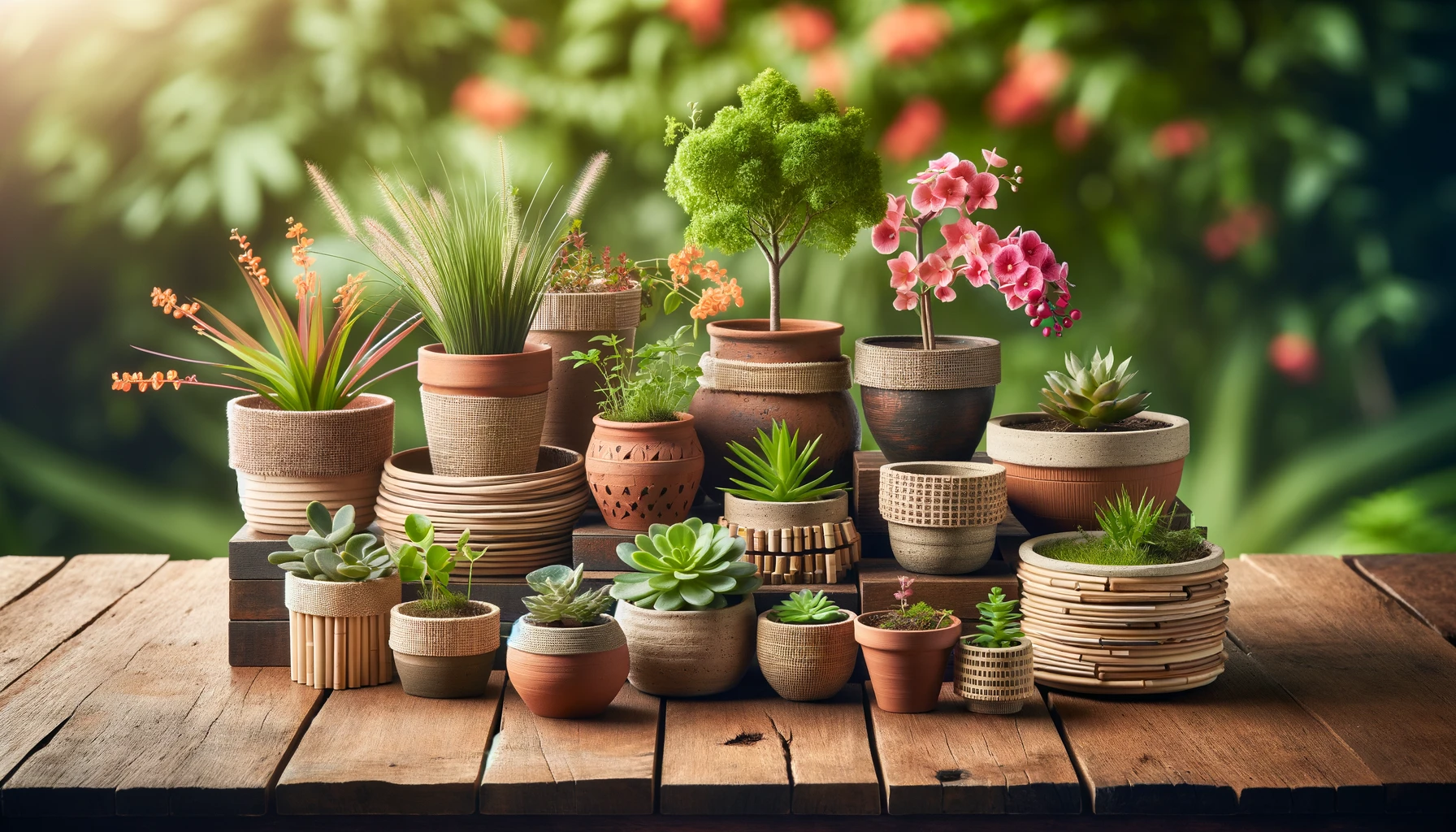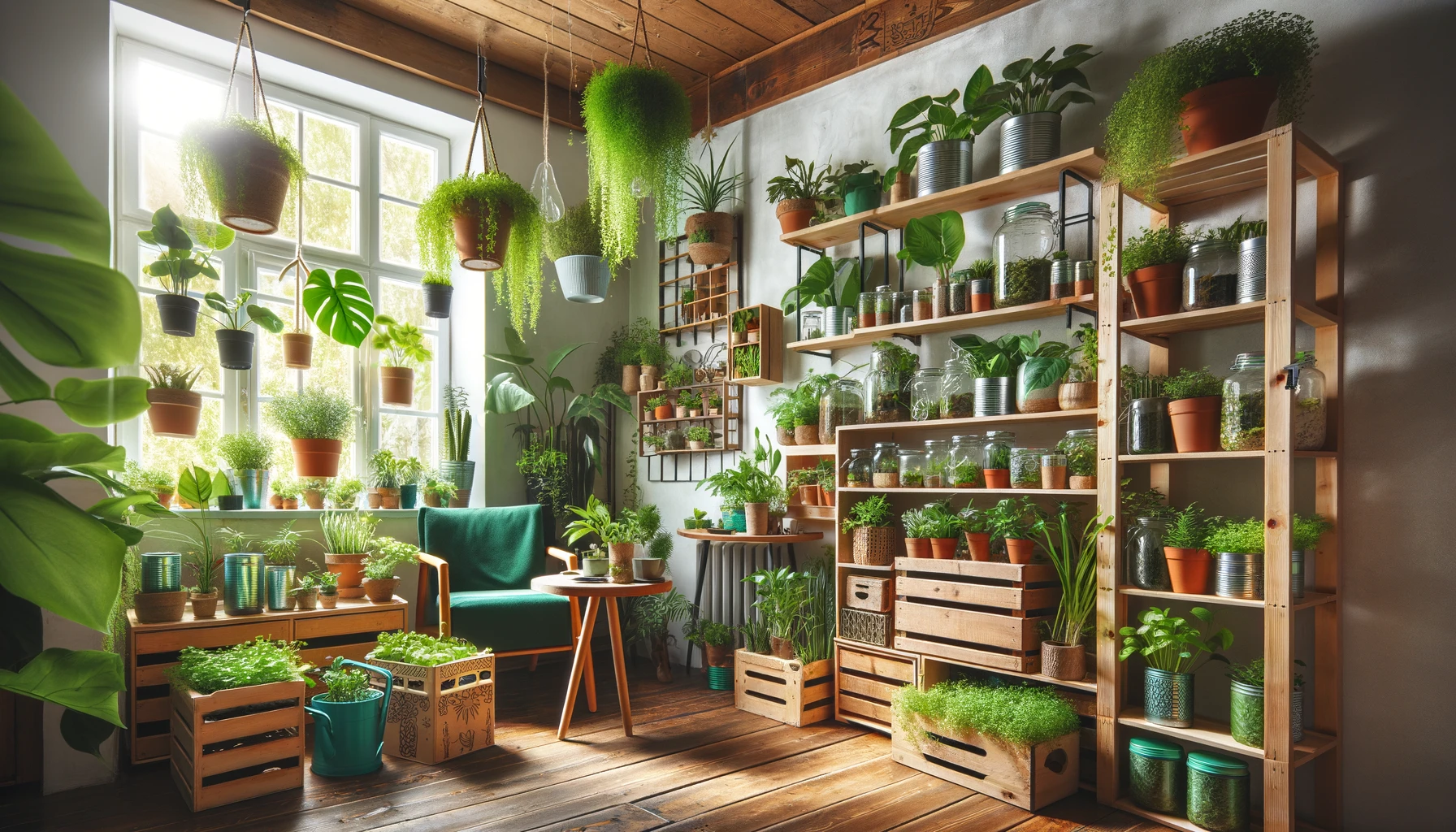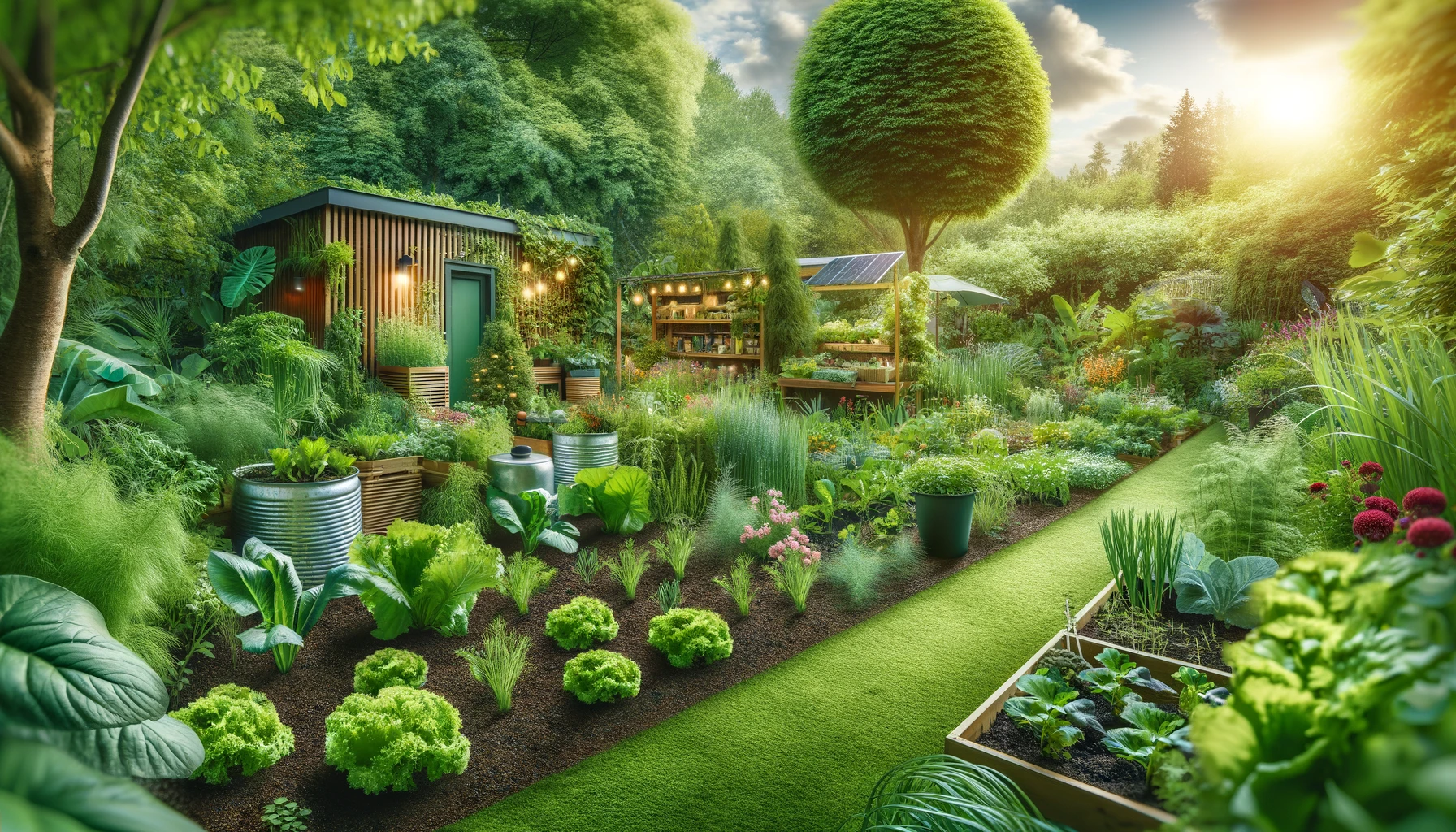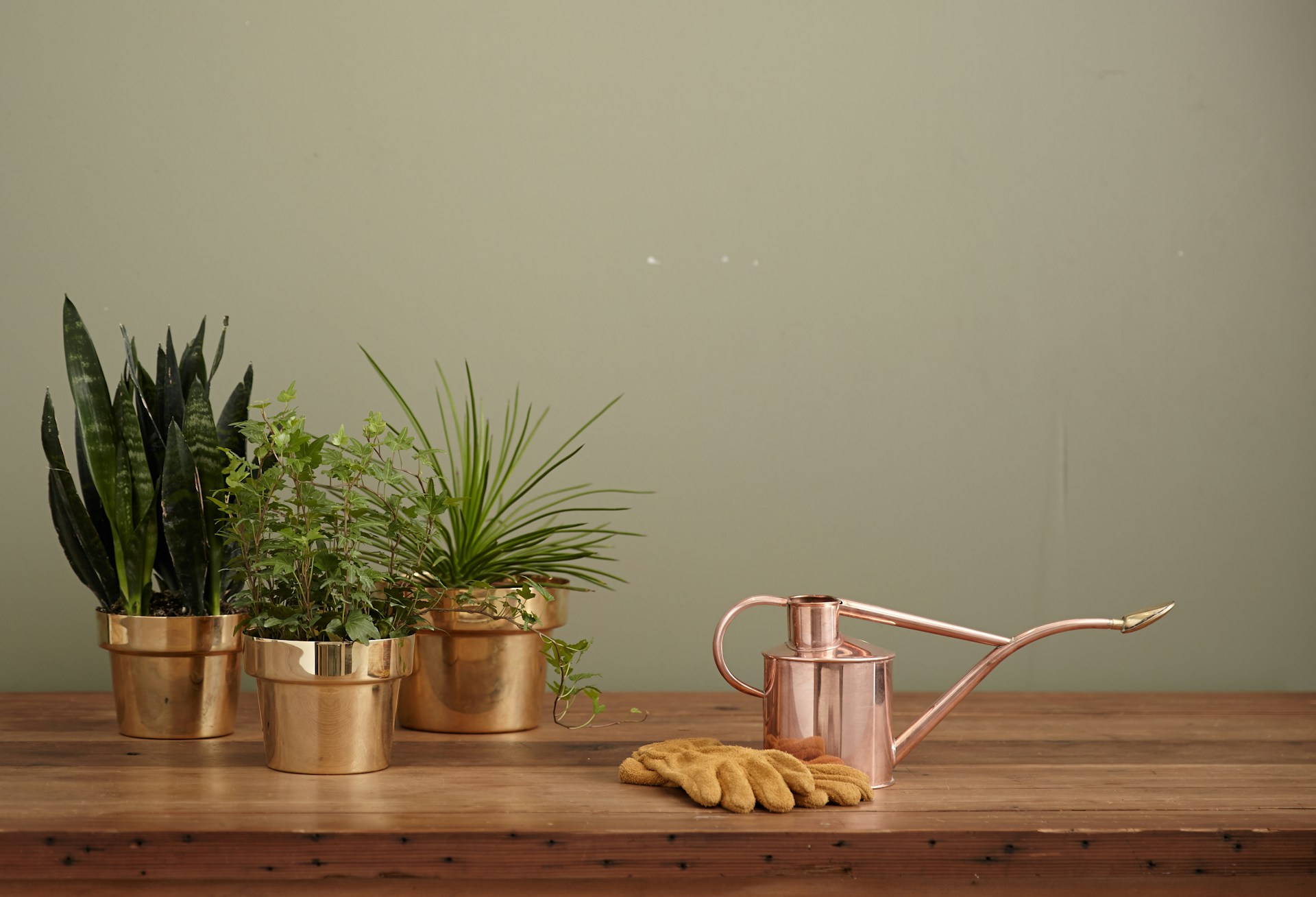This post contains affiliate links. If you buy something from one of our links we may earn a commission. Thanks
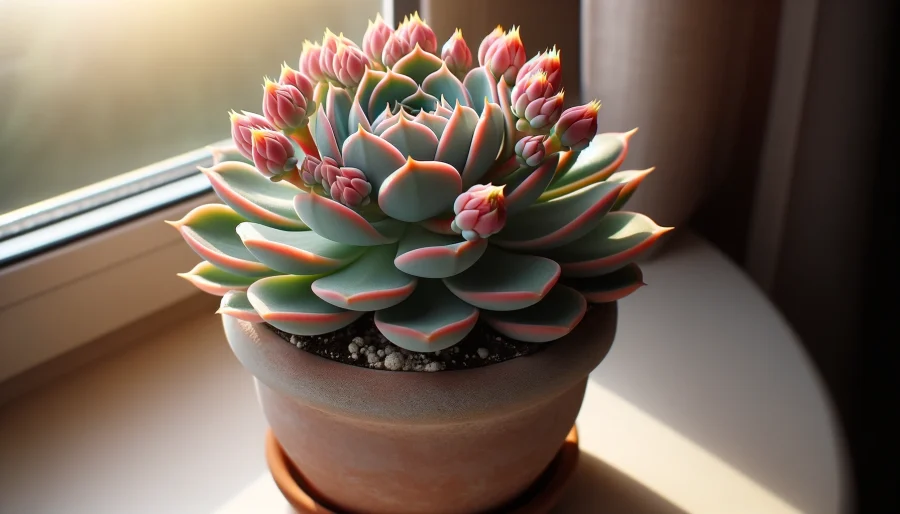
Dive into the perks of caring for an Echeveria elegans benefits where effortless upkeep meets chic home decor in one resilient plant.
Caring for Echeveria elegans
Key Takeaways:
Caring for Echeveria elegans involves:
- Placing it in a bright spot with indirect sunlight,
- Using well-draining soil,
- Watering only when the soil is dry.
- This simple routine ensures your Echeveria stays healthy and vibrant.
Echeveria Elegans Benefits: The Low-Maintenance Plant with High-Style Vibes
Hey there, green thumbs and aspiring plant parents! Are you tired of the same old, same old when it comes to indoor plants?
Looking for a low-maintenance buddy that still brings the wow factor? Let me introduce you to Echeveria elegans, also known as the Mexican Snowball.
This little gem is about to become your new best friend in the world of indoor gardening.
What Is Echeveria Elegens?
Echeveria elegans, the Mexican snow ball, God’s Throne, Mexican gem or white Mexican rose is a species of flowering plant in the family Crassulaceae, native to semi-desert habitats in Mexico.
Echeveria elegans is a succulent evergreen perennial growing to 5–10 cm (2–4 in) tall by 50 cm (20 in) wide, with tight rosettes of pale green-blue fleshy leaves, bearing 25 cm (10 in) long slender pink stalks of pink flowers with yellow tips in winter and spring.
https://en.wikipedia.org/wiki/Echeveria_elegans
Benefits of Echeveria Elegans
First off, Echeveria elegans is a looker. With its rosette shape and pale green-blue fleshy leaves, it’s like having a living piece of art in your home.
But it’s not just a pretty face; this plant is tough as nails. It’s drought-tolerant, so if you’re the type who forgets to water your plants (hey, we’ve all been there), this one’s for you.
Plus, it’s known for improving indoor air quality by absorbing carbon, which is pretty cool, right?
Growing Echeveria Elegans: A Comprehensive Guide
Echeveria Elegans, also known as the Mexican Snowball, is a popular succulent that adds a touch of elegance to any indoor garden.
Its rosette-shaped, pale green-blue leaves make it a stunning addition to your plant collection.
Let’s dive into the specifics of growing this beautiful plant.
Light Requirements
Echeveria Elegans thrives in bright, indirect sunlight. It needs at least six hours of direct sunlight when kept indoors to maintain its vibrant color and compact form.
If you’re growing it outdoors, a spot with full to partial sun is ideal. Remember to acclimatize your plant to prevent sunburn, especially during the hotter months.
Soil
The key to a healthy Echeveria Elegans is well-draining sandy soil. A succulent and cacti mix is perfect as it ensures quick drainage and prevents water from pooling around the roots, which can lead to root rot.
If you’re creating your own mix, combine sandy soil with perlite or pumice to improve drainage.
I find a 50/50 mix of coco coir and perlite works really well for all succulents and cacti.
Watering
Echeveria Elegans prefers the soak and dry method of watering.
Wait until the soil is completely dry before giving it a thorough watering.
During the dormant winter months, reduce watering frequency as the plant requires less moisture.
Overwatering can cause root rot, so it’s better to err on the side of underwatering.
Temperature
This succulent is quite adaptable and can tolerate a range of temperatures.
It prefers warm climates but can handle some cold, making it suitable for growing in various regions.
However, it’s best to protect your Echeveria Elegans from frost and extreme cold by bringing it indoors during winter.
Fertilizing
Echeveria Elegans is not a heavy feeder, so fertilizing is not usually required.
However, if you want to give your plant a little boost, you can use a slow-release, diluted fertilizer during its growing season.
Be cautious not to over-fertilize, as this can harm the plant.
Propagation
One of the joys of growing Echeveria Elegans is its ease of propagation.
You can propagate this succulent from leaf, offsets, and stem cuttings.
Simply let the cuttings dry for a few days, then plant them in well-draining soil.
With some patience, you’ll soon see new growth emerging.
By following these guidelines, you can ensure your Echeveria Elegans thrives and brings beauty to your indoor garden for years to come. Happy gardening!
Common Issues and Solutions for Echeveria Elegans
Even the most low-maintenance plants like Echeveria Elegans can encounter some common issues.
Understanding these problems and knowing how to address them will ensure your succulent stays healthy and vibrant.
Overwatering and Root Rot
Overwatering is a common issue that can lead to root rot, a condition that can be fatal for your Echeveria Elegans.
Symptoms include yellowing leaves and a mushy base. To prevent this, ensure your pot has good drainage and let the soil dry out completely between waterings.
If you suspect root rot, remove the affected parts and repot the plant in fresh, dry soil.
Sunburn
While Echeveria Elegans loves sunlight, too much direct exposure can cause sunburn, leading to discolored or scorched leaves.
To avoid this, gradually acclimate your plant to bright light and provide some shade during the hottest parts of the day, especially in summer.
Pests
Pests like mealybugs, spider mites, and aphids can infest Echeveria Elegans.
These critters suck sap from the leaves, weakening the plant. Keep an eye out for any signs of infestation, such as small bugs or sticky residue on the leaves.
Treat pests promptly with insecticidal soap or neem oil to keep your plant healthy.
By staying vigilant and addressing these common issues promptly, you can keep your Echeveria Elegans thriving and enjoy its beauty for years to come.
Mastering Echeveria Elegans Care Throughout the Year
Caring for Echeveria elegans is an enjoyable journey that extends through all seasons.
With each passing phase of the year, these succulents offer new surprises and require slight tweaks in their care routine.
Seasonal Care Adjustments
As the seasons shift, so do the needs of your Echeveria elegans.
In the summer, they bask in longer daylight hours but may need protection from the scorching midday sun.
Come fall, begin to reduce watering as the plant prepares for dormancy.
Winter brings a rest period, so place your Echeveria in a bright spot and water sparingly, just enough to prevent shriveling.
As spring awakens, gradually increase watering and welcome the growth spurt with some light fertilizing.
Blossoming Beauty: Flowering Care
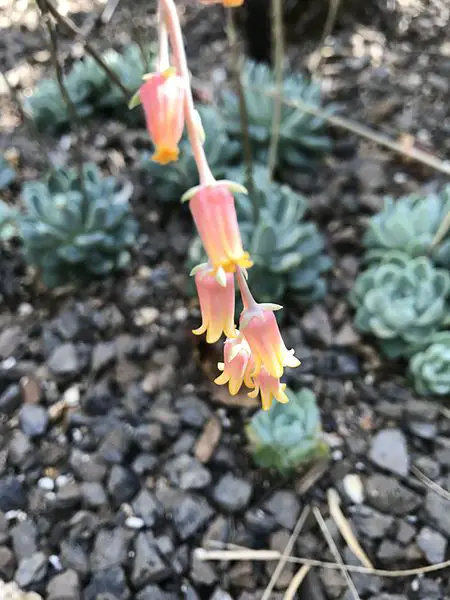
Echeveria elegans blooms with slender pink stalks of flowers with yellow tips, typically in winter and spring.
During this time, ensure your plant continues to get plenty of light to support its flowering.
After the blooms fade, you can snip the stalk close to the rosette’s base to redirect energy back to the plant.
Picking the Perfect Pot and The Repotting Rhythm
The right pot can make a difference. Terra-cotta pots with drainage holes are ideal, as they allow the soil to dry appropriately between waterings.
Repot your Echeveria every two to three years, or when it outgrows its pot, to refresh the soil and provide room for growth.
Designing with Echeveria Elegans
Echeveria elegans fits seamlessly into minimalist and modern designs or as a pop of green in a boho-chic setting.
Pair it with complementary succulents or place it as a solitary showstopper on a coffee table or office desk for a touch of living art.
Combating Common Diseases
While generally hardy, Echeveria elegans can fall prey to fungal diseases if overwatered.
Keep an eye out for signs like soft, discolored spots on the leaves.
At the first sign of trouble, reduce watering and improve airflow around your plant.
Caring Through the Cold
In cold winter climates, Echeveria elegans should be brought indoors to avoid frost damage.
Provide them with a south-facing window where they can enjoy the winter sun and monitor the indoor humidity levels to ensure they remain comfortable until spring’s return.
By understanding these nuances, you can ensure that your Echeveria elegans not only survives but thrives throughout the year, adapting beautifully to each season’s unique conditions.
FAQs About Echeveria Elegans
Q. How often should I water my Echeveria Elegans?
A. Echeveria Elegans is drought-tolerant and doesn’t need frequent watering. In the summer, water it once a week, and in the winter, reduce watering to once a month or when the leaves appear shriveled.
Q. Is Echeveria Elegans toxic to pets?
A. No, Echeveria Elegans is not toxic to cats or dogs. It’s safe to have around your furry friends.
Q. Why is my Echeveria Elegans succulent dying?
A. The most common reasons for an Echeveria Elegans succulent dying are overwatering, insufficient sunlight, and frost damage. Ensure proper watering, provide enough light, and protect it from extreme cold.
Q. How do I propagate Echeveria Elegans?
A. Echeveria Elegans can be propagated from offsets, leaf cuttings, or stem cuttings.
Allow the cuttings or offsets to dry for a few days, then plant them in well-draining soil and mist them daily. Roots should develop within a few weeks.
Q. What is the best soil for Echeveria Elegans?
A. Echeveria Elegans thrives in well-draining, sandy soil. You can use a succulent and cacti mix or create your own mix with equal parts coco coir and perlite.
Q. Can Echeveria Elegans handle direct sunlight?
A. Echeveria Elegans prefers bright, indirect sunlight. It can tolerate direct sunlight, but it’s best to acclimatize it gradually to prevent sunburn. Too much direct sunlight can cause the leaves to turn yellow.
Q. Do I need to fertilize Echeveria Elegans?
A. Generally, Echeveria Elegans doesn’t require fertilizer. However, you can use a slow-release, diluted fertilizer during the growing season to encourage healthy growth.
Wrapping Up: The Charm of Echeveria Elegans
As we conclude our journey into the world of Echeveria Elegans, let’s take a moment to recap the highlights and consider the value this charming succulent can add to our homes and gardens.
Key Takeaways
Echeveria Elegans, with its rosette-shaped, pale green-blue leaves, is not only a visual delight but also a low-maintenance plant that thrives with minimal care.
It prefers well-draining soil, bright indirect sunlight, and infrequent watering, making it an ideal choice for both beginners and seasoned gardeners.
Its drought tolerance and air-purifying qualities are added bonuses.
Embracing Echeveria Elegans
Incorporating Echeveria Elegans into your home or garden is a fantastic way to enhance your space’s aesthetic appeal while enjoying the practical benefits of an easy-to-care-for succulent.
Whether displayed on a sunny windowsill or nestled among other plants in a rock garden, this Mexican Snowball is sure to bring a touch of elegance and tranquility to its surroundings.
In conclusion, Echeveria Elegans is a true gem among succulents, combining beauty, resilience, and simplicity.
By following the care tips outlined in this guide, you can ensure that your Mexican Snowball thrives and continues to brighten your space for years to come. Happy gardening!
For more detailed information on caring for succulents Benefits Of Succulent Plants
Resources for Growing Echeveria Elegans
Here are some reputable sources that provide detailed information about growing and caring for Echeveria Elegans:
- Epic Gardening: This comprehensive guide covers everything from light requirements to common issues and solutions for Echeveria Elegans. Echeveria Elegans: Growing Mexican Snowballs
- Garden Beast: Find useful tips on offset propagation, repotting, and caring for Echeveria Elegans, including watering and fertilizing recommendations. Echeveria Elegans: How to Grow & Care for Mexican Snowballs
- DIYs.com: Explore care tips for soil, transplanting, watering, and fertilizing Echeveria Elegans to keep your succulent healthy and vibrant. Echeveria Elegans Care: How to Grow and Care For The Mexican Snowball
- Wikipedia: Get an overview of the Echeveria Elegans species, including its description, cultivation, and etymology. Echeveria elegans – Wikipedia
By exploring these resources, you’ll gain a deeper understanding of how to successfully grow and care for Echeveria Elegans, ensuring that this beautiful succulent thrives in your home or garden.





